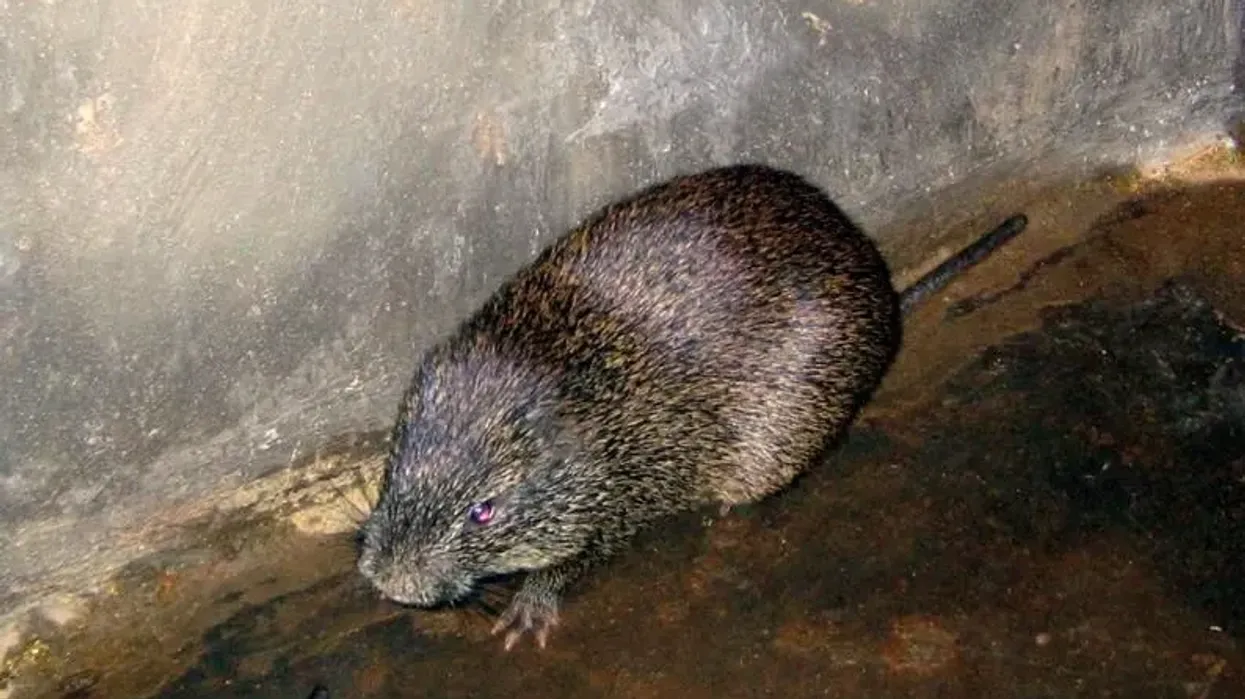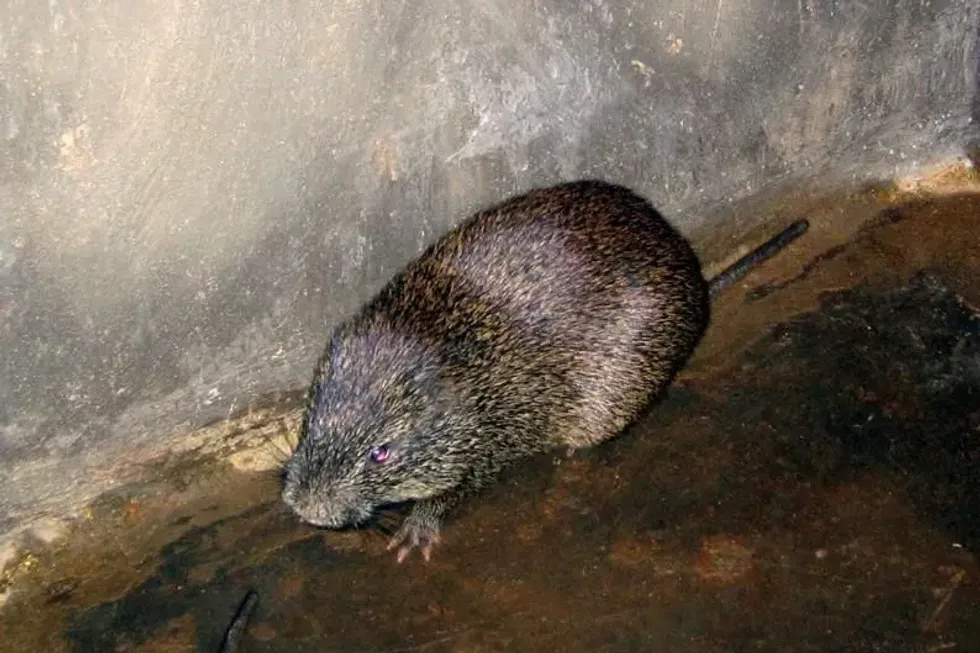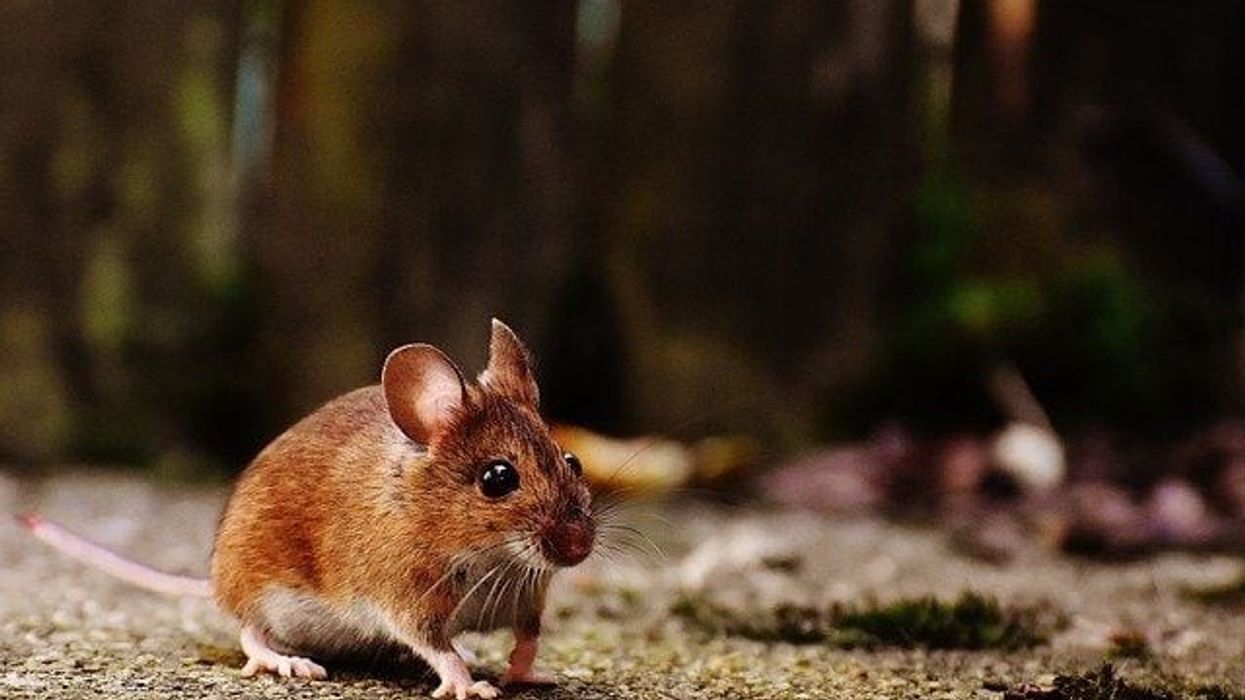Cane rats are a type of large South African rodent found extensively on the African continent. The name cane rat includes two species that are found in Sub Saharan Africa, both belonging to the genus thryonomys.
Found amidst tall grass and lurking on farms, the two species are known as the greater cane rat and the lesser cane rat. The scientific names of the two cane rat species are the Thryonomys gregorianus and Thryonomys swinderianus.
They are found in large numbers and are a staple in the diet of some tribes who force-feed them in captivity. The cane rat can also be found lurking among plantations of sugar cane and cassava, and are extensively hunted by farmers. The lesser cane rat is found in slightly moist wetlands.
They are not prolific breeders but are kept as low-maintenance livestock in many places. Cane rats are primarily nocturnal.
However, there have been instances of them hunting during the day as well. Their primary food source is plants and bark.
They are extremely athletic, swift, and agile, both on land and in the water. Their favorite food includes elephant grass shoots, particularly when the shoots are new.
Despite primarily housing in forests, deforestation has forced the rats to get used to tree-less land. They produce two litters in a year. The species is known to be intelligent and there has been no instance of them biting a human.
When captured, these animals tend to thrash around a lot, attempting to escape. Sometimes, their home range includes abandoned termite mounds and burrows of aardvarks and hares. At other times, they simply dwell amidst large mounds of grass and bushes.
Both species of cane rats are the only members of the Thryonomyidae family. To date, no other living rodents have been classified as belonging to this family, even though some fossils have been found.
Read on to find more about the cane rat, and if you like this article, then check out rice rat facts and black rat facts.
Cane Rat Interesting Facts
What type of animal is a cane rat?
The African cane rat is a species of a large rodent.
What class of animal does a cane rat belong to?
The cane rat T. gregorianus belongs to the class Mammalia.
How many cane rats are there in the world?
There is no exact estimate of the total population range of the cane rat, Thryonomys swinderianus. However, their numbers are within the acceptable range and some researchers actually believe the graph is trending upwards.
Where does a cane rat live?
The cane rat is found to the south of the Sahara in Africa just like the pouched rat. It covers various countries including Ethiopia, Kenya, Malawi, Sudan, Tanzania, Gabon, Ghana, Nigeria, and more.
What is a cane rat's habitat?
The general habitat of the species includes farmlands and shrublands of Africa. However, the two species live in distinctly different habitats. The greater cane rat tends to prefer tall grass and cane plantations. The lesser cane rat species prefers to live in wetlands.
They dwell in moist savanna regions of Africa which also feature tall grass. Cane rat species are much larger in size than normal rats hence their preference for taller grass. It also forms their main food source.
Who do cane rats live with?
The lesser cane rats of Africa are always found in a small family or congregation. However, the greater cane rat may live alone or in small family groups of more than 12 cane rats. This depends on the season. During the breeding season, they separate into male and female groups.
How long does a cane rat live?
The average lifespan of the African giant cane rat is two years. Sometimes a cane rat lives as long as four years! They become sexually mature at the age of six months.
How do they reproduce?
The breeding season is the rainy season. Usually, females reach maturity earlier than males. For males, maturity age comes at seven or eight months whereas for females it is five or six months.
A single female may mate with as many as four males. This system is flexible and many different practices are in place including monogamy and polyamory.
Breeding happens twice per year but in some regions, there are more prolific. In captivity, cane rats may several times per year (all year round). The females directly give birth to the young who are quite well developed, though deaf and blind.
The average gestation period is around 132-172 days. The young ones are weaned at around four weeks of age.
A single litter may contain up to nine young ones. When bred in captivity, cane rats are often over-bred with many males being introduced over a short period of time. However, for good health, the female must have two months between pregnancies and nursing young rats.
What is their conservation status?
Currently, African cane rats have been recognized as a species of Least Concern by the International Union for Conservation of Nature (IUCN). There are no major threats to either Thryonomyidae species and their population is within an acceptable range.
The greater cane rat is hunted for food in some parts and their population in some regions has dwindled.
Many farmers also treat them as pests since they feed on sugar cane and cassava, and thus, they are widely hunted. Deforestation has been stated by some researchers as increasing their population as they have quickly adapted to life in new lands.
Cane Rat Fun Facts
What do cane rats look like?

A cane rat, Thryonomys swinderianus, is a large, heavily built rodent with a huge body and small feet. Their body looks similar to other rats with a couple of beady eyes, a blunt mouth, and a long tail.
Their hind feet are larger in size than their forefeet. These animals have white lips and sharp incisors which keep growing and must be continuously trimmed by gnawing. Their bodies are covered by bristle-like brown fur speckled with yellow.
Their feet are extremely sturdy and suited for running with five claws on their forefeet and four on their hind feet. The male is larger in size than the female.
How cute are they?
If one finds rats cute, they will find cane rats to be very cute just like kangaroo rats who are incredibly adorable creatures. They are covered with fur and have beady, inquisitive eyes. They are forever gnawing on something or the other to sharpen and break down their incisors.
How do they communicate?
These animals have excellent hearing capabilities. Cane rats communicate by producing ultrasound frequencies that are not audible to the human ear. In fact, if cane rats squeak or grunt, it is possibly talking to humans or other animals who can hear this range.
Between themselves, cane rats express stress, discomfort, territoriality, and other emotions via ultrasound. This causes many to believe that cane rats are quiet animals. They cannot see well.
How big is a cane rat?
Cane rats are 13.7-23.3 in (34.7-59.1 cm) length. Their body might weigh as much as 22 lb (9 kg). Cane rats are four times the size of brown rats.
How fast can a cane rat run?
Both greater and lesser cane rats are extremely fast creatures and prefer to take flight rather than fight. They can swim very fast in the water just like water rats.
How much does a cane rat weigh?
Cane rats of Africa weigh around 13.2-15.4 lb (6-7 kg) similar to Nutria rats.
What are the male and female names of the species?
Male cane rats are known as bucks whereas females are known as does.
What would you call a baby cane rat?
Baby cane rats are known as pups.
What do they eat?
Cane rats feed on sugar cane, tree barks, grass, cassava, and other types of crops.
Are they poisonous?
Cane rats from the family Thryonomyidae do not carry any forms of poison.
Would they make a good pet?
Cane rat domestication is generally not seen. While they are not kept as pets, cane rats are farmed and bred in captivity.
They are usually frantic after being captured and will use their nose to batter their way out of cages which leads to them getting injured. Captive rats thrash around a lot but do not harm or bite humans. It is best for these animals to remain in their natural habitat of Africa, though over-population is now a concern.
Did you know...
An interesting feature by which one can identify cane rats is that their incisor teeth are bright orange! Male cane rats that have reached sexual maturity feature similar bright orange genitals.
The skin of the cane rat is very fragile and delicate. It tears easily underneath the fur but heals quite quickly as well. Even their tail may break off if caught tightly. The rats are prone to injuries and when captured prefer to escape at any cost.
There is no way to distinguish between the greater and Lesser cane rats by sight alone. They are both pretty much the same size.
Since species are often in different stages of growth, distinguishing by size is not reliable. One method of identification is based on their skull. The greater cane rat, Thryonomys swinderianus, has a foramen ovale running in their skull whereas the lesser cane rats do not.
There is no way to separate them based on sight alone. Their main distinguishing feature comes from the type of habitat they occupy.
What is cane rat farming?
Similar to other types of animal husbandry, cane rat farming involves keeping them in enclosures and selling them for meat. They are easy to keep on a farmland habitat as they are herbivorous and eat most plantation matter like maize, cane, and even grass.
They are low-investment livestock and act as income generation for many families. Farmers capture and rear them on their farmlands.
Sometimes, they are force-fed on farms to increase their fat content. At other times, they might be bred extensively without the females receiving appropriate rest between young ones.
A breeding station established in the 1980s conducted surveys and training to incorporate better and more humane methods of breeding them. Today, farmers are much more aware of this.
What do cane rats taste like?
Cane rats are consumed as meat in many parts of Africa and are in high demand. In itself, cane rat meat is pungent and is similar to rabbit meat.
However, when barbecued well, it has a delicious taste similar to that of well-cooked pork. It is tender, juicy, and quite fatty. Their meat is often preferred because of the high protein content.
Here at Kidadl, we have carefully created lots of interesting family-friendly animal facts for everyone to discover! For more relatable content, check out these Cuban solenodon facts and greater bilby facts for kids.
You can even occupy yourself at home by coloring in one of our free printable cane rat coloring pages.










